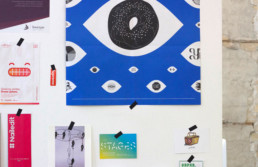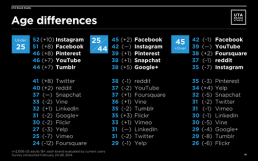So, Why Pinterest?
Last September, Pinterest announced that it had reached 250 million active users – a new record for the platform. The social network is not new, but if you’re unfamiliar with it essentially users “pin” digital content like inspirational images, helpful tips, intriguing recipes, and more onto digital cork boards.
So what are so many people finding so pinteresting?
It’s kind of an anti-social network.
In a world where Zuckerberg owns your life and getting likes on your Instagram pictures rules all, it’s kind of nice to be semi-alone with your thoughts in a space that allows you to quietly explore what other people are thinking and creating, and archive your own inspiration. Pinterest doesn’t actively publicize your activity in the same way that Facebook does, and you often aren’t creating your own original content the way you do for other platforms, which all adds up to mean that the competitive nature of other social networks is notably absent.
In the platform’s humble beginnings, pins were shown in chronological order, but like Facebook, Instagram, and Twitter before it, Pinterest eventually put a pin in that model to opt instead for an algorithm-driven feed. However, in a very un-Zuckerberg move, they recently introduced an update for their mobile app that allows users to once again browse through pins in chronological order (insert all of the celebrating emojis here).
Pinterest has also adjusted wonderfully to the growth in usership. While other platforms make changes that are clearly focused on increasing advertising spends, or make changes for the sake of changes that infuriate their users – see Instagram’s recent side-to-side scrolling update that lasted all of an hour before the backlash caused them to revert – Pinterest has gifted us with user-driven features like Pinterest Lens (a visual search engine), new ways to organize pins, and the option to archive old pins.
All in all, the platform manages to feel less like a social network and more like a dreamy collection of beautiful things curated by you, for you.
While staying user-focused, Pinterest has also upped its advertising game.
Pinterest has stepped up their game for advertisers by developing a more sophisticated backend for Pinterest for Business users, allowing businesses to boost pins to increase their reach and geotarget users to give the most bang for your buck. But, importantly, the algorithm prevents users from feeling like their feed is swarmed with ads. The improvements earned Pinterest a reported $500 million in revenue last year to go along with an increase of 50 million users since September 2017 – not too shabby.
Riding on the same wavelength, Pinterest provides a really unique selling opportunity to companies. One in two Millennials – a demographic that is now solidly in the workforce and has disposable income – report using Pinterest at least once a month. 93% of users said they use Pinterest to plan for future purchases, meaning users are on the platform because they’re looking to spend money and want inspiration on how to do it.
It’s keeping pace with the turtle, not the hare.
Unlike Facebook, Instagram, Twitter, and Snapchat, Pinterest has rejected the Silicon Valley model of superfast growth and unnecessary changes, and of breaking the platform and fighting to fix it. While this slower growth model has allegedly upset some (probably ex) employees, it is obviously working. Right now, Pinterest is projected to exceed $1 billion in advertising revenue by 2020– that’s sounds like winning to us.
So, are you jumping on board the Pinterest train?


